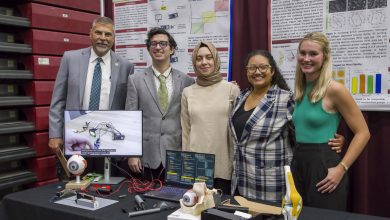Florida Tech Research Year In Review, Part 1
As we wrap up 2018, here are some research highlights and news coverage on Florida Tech from this year.

This year, NASA launched a SpaceX Falcon 9 rocket carrying the Transiting Exoplanet Survey Satellite (TESS). The $337 million satellite launched from Cape Canaveral Air Force Station. Over a two-year survey, TESS will monitor more than 200,000 stars for momentary winks in brightness caused by planets passing in front of their star; a technique known as ‘planetary transits.’
Florida Tech and Aerospace, Physics and Space Sciences head Daniel Batcheldor are an important part of that process. Last February, he and his team developed a tissue box-sized payload that was tested outside the International Space Station. It showcased a new imaging technology that will allow telescopes to better capture light from objects tens of millions of times fainter than another object in the same picture. That means they could better capture dimmer light directly from a planet even when it is close to a much brighter star.
-Florida Tech students had a unique opportunity to conduct research with the school-sponsored W.T. Hogarth research vessel. The vessel’s advanced technology is designed to study oil spills, red tides and other environmental concerns.
-One of Brazil’s largest papers, Folha De S. Paulo, wrote about Ocean Engineering and Marine Sciences professor Mark Bush and graduate student research.
-In Wired’s article on the January breakdown at JFK Airport due to the winter bomb cyclone, College of Aeronautics Aviation Management associate professor William Rankin discussed the issues involved.
–ChemEurope, a top publication covering the chemical industry and its supplier in Europe and the United States, featured professor Martin Glicksman and Arizona State University assistant professor Kumar Ankit’s discovery of the bias field in metals solidification. The news was also featured in Science Newsline.





